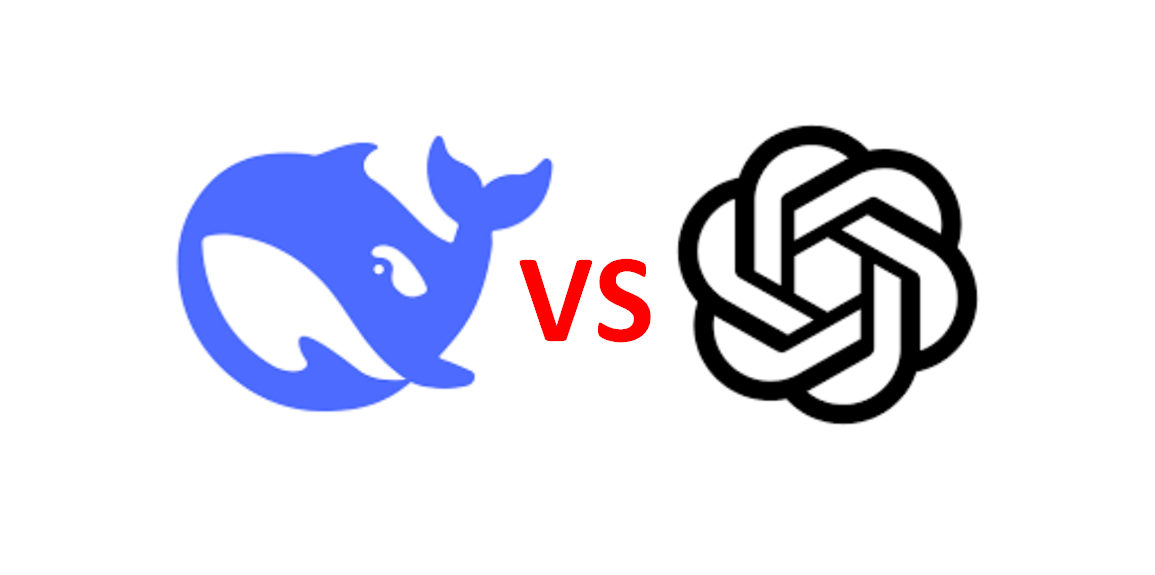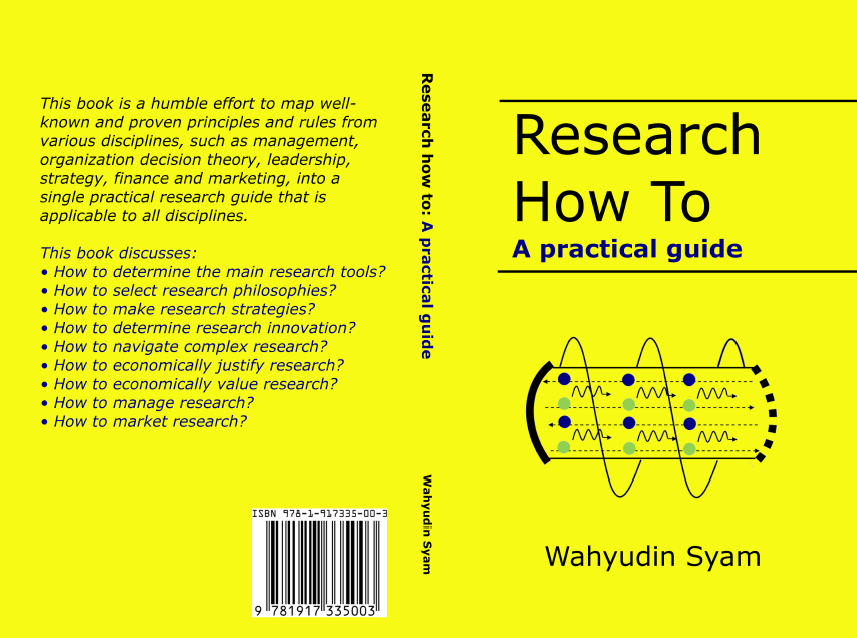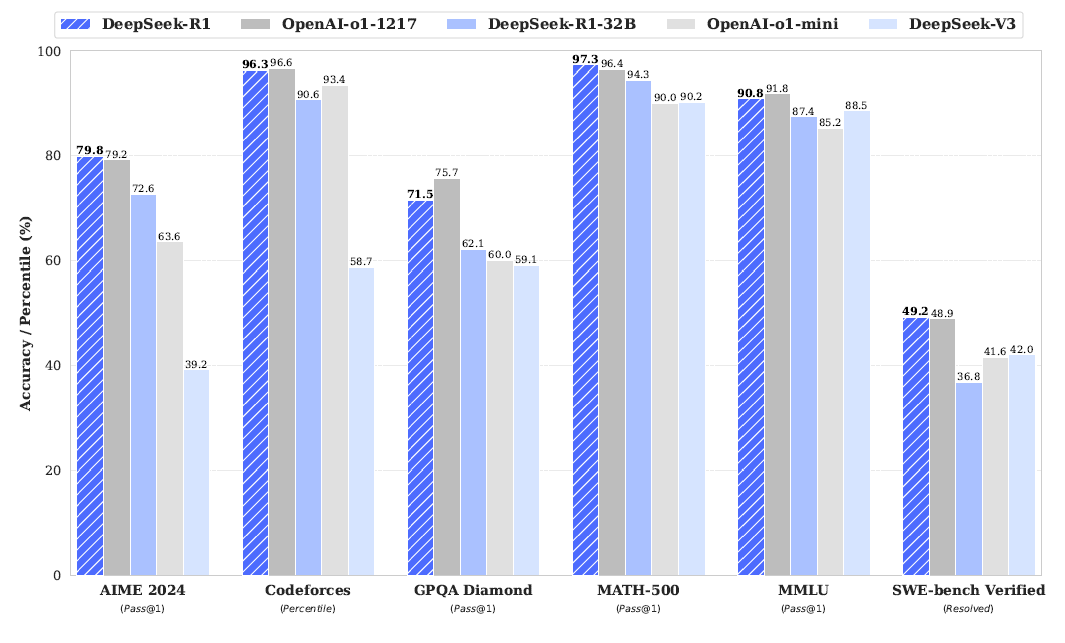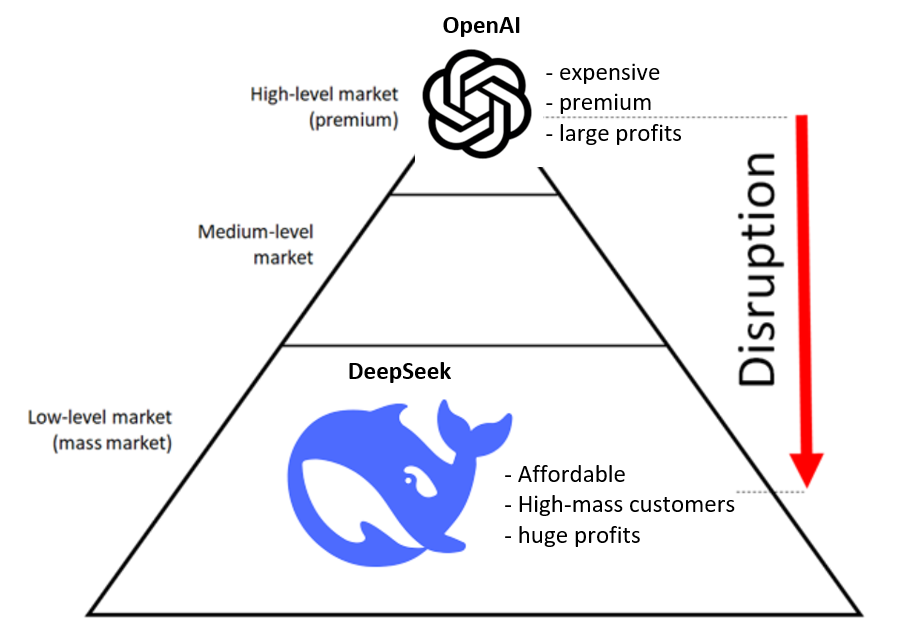DeepSeek versus OpenAI: How disruptive innovations could overturn a giant incumbent
DeepSeek has shocked the artificial intelligence (AI) world when they released their flagship DeepSeek R1 model.

DeepSeek has shocked the artificial intelligence (AI) world when they released their flagship DeepSeek R1 model.
This DeepSeek R1 model have a comparable, and at some aspect slightly better, performance than the flagship OpenAI GPT 4-o1 model and only uses a fraction of the GPT4-o1 cost for training [1].
In this post, we will discuss the rivalry between DeepSeek and OpenAI from the perspective of disruptive innovation [2]. This rivalry is as a case study on how disruptive innovation originated from a small newcomer company can shock a giant established incumbent!
READ MORE: Disruptive innovation to create growth: A research perspective
Do you want to have good research philosophies and improve your research management and productivity?
This book is a humble effort to map well-known and proven principles and rules from various disciplines, such as management, organization decision theory, leadership, strategy, finance and marketing, into a single practical research guide that applies to all disciplines.

You can also get this book from Rakuten Kobo.
Why DeepSeek shocks the AI world
Founded in 2023, DeepSeek has shocked the world of tech (AI) when they released their latest flagship model DeepSeek R1 in the end of January 2025. This model has a comparable performance with the leading GPT4-o1 model and in some tests, such as math, DeepSeek R1 has a better performance than GPT4-o1 [3].
Figure 1 below shows the performance comparisons of DeepSeek R1 model with respect to other models, including OpenAI GPT 4-o1, DeepSeek-R1-32B (small size), OpenAI GPT 4-o1 mini and DeepSeek V3.
From this comparison, DeepSeek is comparable with GPT 4-o1, except for GPQA dataset DeepSeek has around 4% lower performance than GPT 4-o1. However, DeepSeek has 1% higher performance in MATH problem compared to GPT 4-o1.

The jaw-dropping moment is not the comparable performance of DeepSeek R1 with respect to GPT 4-o1 (although this is also a great thing). Instead, the low training cost of DeepSeek R1 shocks the world of tech.
DeepSeek R1 training cost is about USD 6 million. Meanwhile, OpenAI GPT- 4-o1 required around hundreds of millions (some say around USD 100 million) of US dollar to train GPT 4-o1 model [3].
The lower training cost of DeepSeek R1 compared to GPT 4-o1 is, one of them, due to DeepSeek R1 only uses old and cheaper H800 GPU, instead of the latest but more expensive H100S GPU [4] and uses efficient training algorithms.
Moreover, DeepSeek R1 has faster inference speed than GPT 4-o1 [3].
Since DeepSeek R1 has a lower energy use for inference, the inference cost for DeepSeek R1 is about <USD 4 (some said around USD 2.19 per million token [4]) per million tokens which is much cheaper compared to the inference cost of OpenAI of USD 100 per million tokens (some say USD 60 per million token outputs [4]).
After the announcement of DeepSeek R1 model, the mainstream US stock market plummeted due to the share price of the tech giant, such as Nvidia also plummeted up to 17% in one day. Not only Nvidia, other chip maker shares such as AMD and Broadcom also dropped.
Following the drop of the share of chip makers, the share of semiconductor manufacturer, such as TSMC also sharply droped.
The chain effect of share drop continues to energy companies. Because, after being enlightened by DeepSeek that they do not need very high GPU and require less energy to train the large language model (LLM), the market things that energy companies will not have as high demand as expected for training large foundational LLM, hence the companies will have less expected profits than before.
Approximately, DeepSeek R1 announcement has wiped out around USD 2 trillion of US stock market cap. Specifically for Nvidia, its market cap deceased around USD 500 billion.
In summary, the announcement of an efficient and effective DeepSeek R1 model developed a 2-year small AI companies with limited resources (people and compute power) shocked the world and market-leader giant companies with large resources.
This case is a prove that disruptive innovation always brings shockwaves and extraordinary changes to the market competitions.
DeepSeek as a disruptive innovation case
According to Prof. Christensen, disruptive innovation is about creating products or services that are affordable by ordinary people (that is mass customers) and can deliver, at least, minimum customer requirements (satisfy the basic or more of customer wants).
This disruptive innovation is the one that can bring an economic growth to a nation!
If we relate to DeepSeek and ChatGPT, DeepSeek makes a high-performance LLM model for mass market customers to access at very affordable cost.
Meanwhile, OpenAI is at the premium market because not all customers can afford the subscription fee of GPT premium LLM model (GPT 4-o1) at the moment.
For example (at the time of writing), the cost of DeepSeek subscription to access full model and functionality is about USD 0.55 per million input token and USD 2.15 per million output tokens. Meanwhile ChatGPT subscription fee is USD 200 per month.
Figure 2 below illustrates the pyramid describing the level or hierarchy of market, from premium to low-level market.
The premium market contains products that are expensive but has very large profit margin and target premium customers. In the contrary, low-level market offers affordable products with good margins and is absorbed by mass customers.

The margin in this affordable, but high mass customer, market is not as high as the margin in the premium market.
But, why is the affordability of products or services resulted from disruptive innovations and does not have a very high margin can create economic growth?
The answer is the mass market. Although the margin of affordable products/services is not as high as premium products/services, the huge profits come from capitalising mass customers as the profit multiplies.
Another reason that explains why disruptive products/services can bring economic growth is the Jevons paradox.
This paradox first explained by William Stanley Jevons in the 19th century. In his observation, when a coal engine efficiency is improved, the demand of coal increased.
The increase of the coal demand is due to the lower energy per unit cost required by improved coal engines. That is, the more affordable a product or service, more people are attracted to buy them and hence increase demand of the products or services.
That is, more demands mean more profit!
Figure 3 below shows the illustration of the Jevons paradox. In this figure, when the energy per unit is high, the demand is low. In this case, the total energy demand is $10 \times 1=10$.
Meanwhile, when the energy per unit is low, the demand becomes very high. In this case, it brings the total energy demand to be $2 \times 11=22$.

From this lesson, we can observe that disruptive innovation requires a significant effort. However, this innovation may not be always “expensive”.
The key is “creativity”. Interestingly, creativity often occurs when we are put under constraints, such as limited resources.
In the case of DeepSeek, due to limited supply of GPUs, they try to find a creative way of training LLM with lower compute power but is more effective. They found that, by utilising reinforcement learning, they can significantly increase the efficiency and effectiveness of a large LLM training [4].
This case study also reminds as about when Toyota disrupted the America car market.
Initially, Toyota entered the American market as a cheap car but can be afforded by many people. And then, with profits they have gained, they improved the car and slowly step up the market and target the incumbents (Ford and GM).
READ MORE: Classic philosophies that have been forgotten: Important factors for research and development
Conclusion
In this post, we have discussed a case of disruptive innovation. The case is when DeepSeek R1 model can deliver a comparable, and at some metrics, better performance compared to the current LLM leader, GPT 4-o1.
DeepSeek can train their R1 model with the fraction of cost of OpenAI used to train their GPT 4-o1. This disruptive event has wiped out around USD 2 trillion of US stock market cap in one day.
As Prof. Christensen have said, disruptive products or services can create an economic growth due to high profits coming from high demands from mass customers. This high demands partly can be explained by the Jevons paradox.
Finally, it has been proven that with “creativity”, we can significantly reduce the cost to perform “disruptive innovation”.
References
[1] Guo, D., Yang, D., Zhang, H., Song, J., Zhang, R., Xu, R., Zhu, Q., Ma, S., Wang, P., Bi, X. and Zhang, X., 2025. Deepseek-r1: Incentivizing reasoning capability in llms via reinforcement learning. arXiv preprint arXiv:2501.12948.
[2] Christensen, C. and Raynor, M., 2013. The innovator's solution: Creating and sustaining successful growth. Harvard Business Review Press.
[3] https://play.ht/blog/deepseek-vs-openai/ [Accessed: 2 February 2025].
[4] https://www.deeplearning.ai/the-batch/issue-286/ [Accessed: 3 February 2025]
You may find some interesting items by shopping here.
